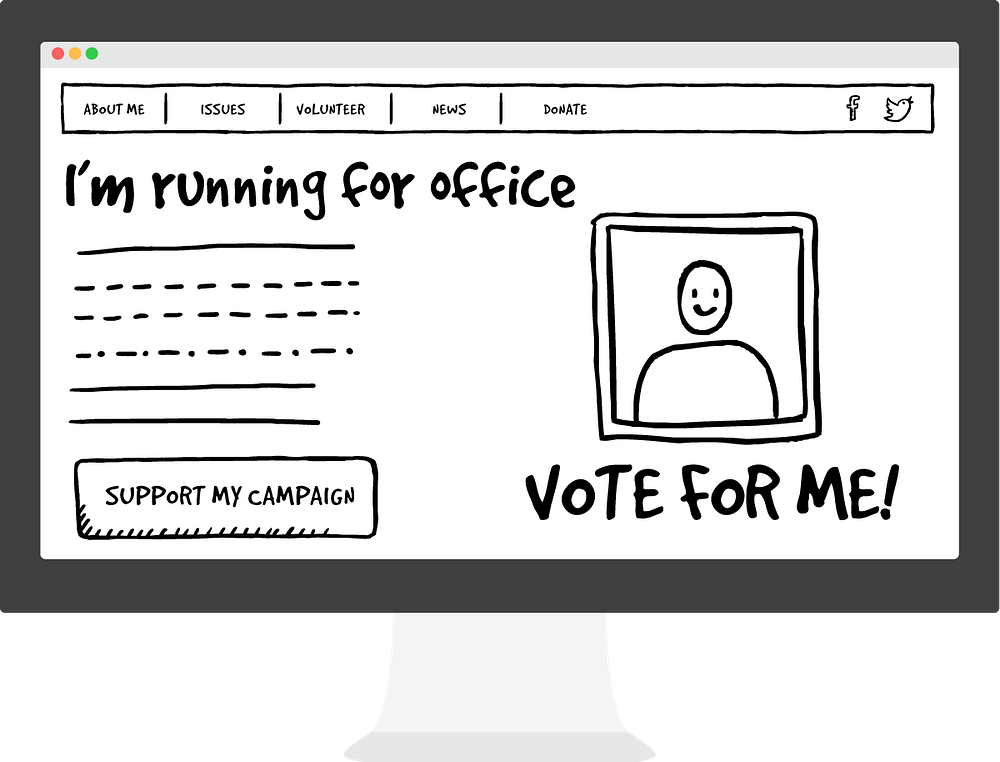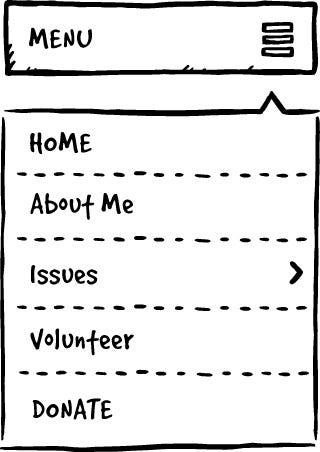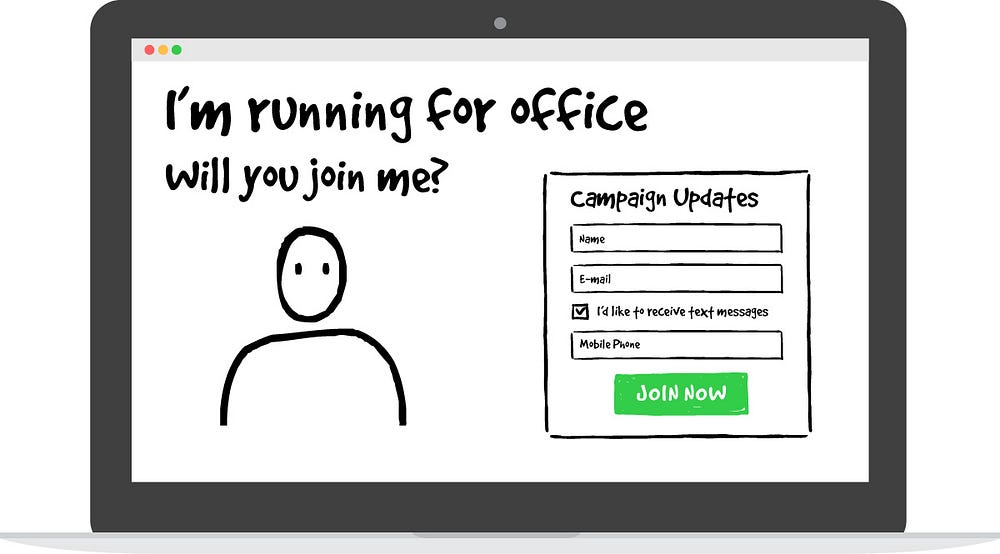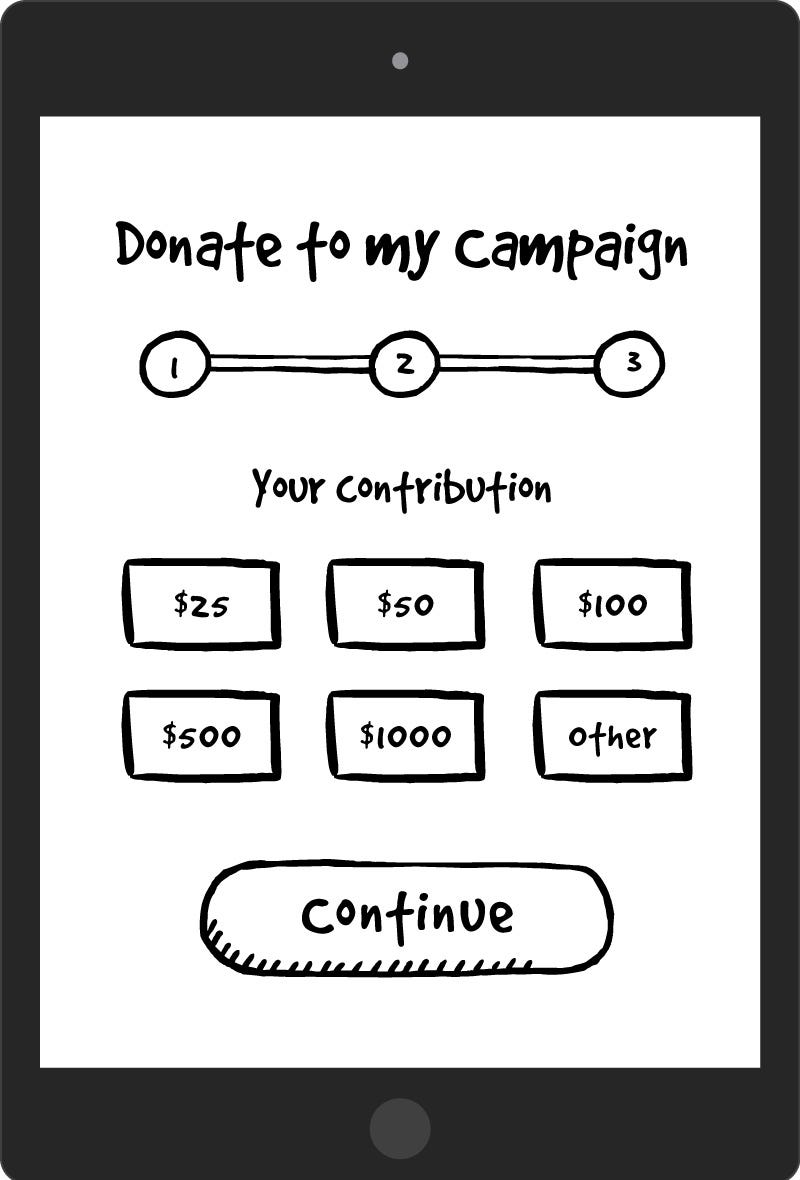A website is the digital headquarters for a down-ballot campaign. It’s a place for voters to learn about you, why you’re running for office, and how to get involved with your election bid. Many times viewing your website is the first contact a person has with your campaign! No pressure!

Diving into the website world can be a confusing and difficult space if you’ve never done it before. Do you hire a professional? Go the DIY route? How do you know where to begin?
Most people don’t realize that one of the first parts of building a website has nothing to do with code. These steps involve a bit of strategic planning to craft the message you want voters to see. By building a solid foundation, you’ll be well on your way to creating an engaging online presence.
Let’s get started.
What’s in a (domain) Name?
Before announcing anything to the public, make sure to secure a domain (www.example.com) for your site. Good domains include your name and may also include the office you’re running for as well as your location. In some instances your campaign slogan may be the best choice.

Also, make sure to buy any domains related to your name and campaign. This is a cheap form of insurance from attacks by your opposition. You won’t be able to buy every single domain someone could use against you (although some have tried!). Focus on grabbing the top three to five (or more) .com domains related to your name and down-ballot campaign. Doing this will go a long way toward locking down your digital campaign space.
Who, What, and Why
Once you’ve secured a domain, it’s time to come up with a content plan for your site. This process doesn’t have to be fancy and requires zero knowledge of how websites work. Grab a pen or open a new Word doc and start by writing down the answers to these three questions:
-
- Who are you? — tell your story, background, anything that would help relate
-
- Why are you running? Let us know your motivation for running. What issues are important to you?
- Why should a person vote for you over your opponent? State your case.
Since you’ve decided to run for office you’ve already given these questions some thought. Now’s your chance to put these thoughts into writing. Doing this will not only help build a website, but can help with every other messaging medium down the line.
What pages are important?
After you have answers to the questions above, it’s time to tailor it to your web audience. At minimum, a campaign website should contain the following pages or sections:
-
- Homepage/Landing page
-
- About
-
- Issues/Platform
-
- A way to get involved (via Email signup and Volunteer signup)
- Donate

Homepage
The purpose of your homepage is to introduce your campaign and move visitors to take action. In most instances, this is the first page that visitors see when looking for your campaign.
Too often we see homepages that try to do everything at once and in turn end up confusing visitors. Keep it simple.

Include one clear call to action like an email sign-up or a donation ask at the top of the page. This call to action can change as your campaign evolves. The important thing is that it is clear and stands out.
Below the call to action, provide secondary campaign details. Consider including a brief introduction (via text or video) about yourself. Provide recent campaign news updates. Or, post a few of your key campaign issues.
About
The “About” page is the second most visited section of most down-ballot websites. People want to know who you are and what your motivation is for running. Tell them! Tell your story. What is your background/experience and why did you decide to pursue public office? What do other people say about you? Include social proof in the form of quotes and endorsements.
Don’t forget pictures! Voters need to connect a face with a name. Cute pictures of your kids are also encouraged.
Issues/Platform
Right behind “About” is the issues section. Do you have a revolutionary new plan for improving road conditions? Tell us about it! Connect with your audience. Talking about “the issues” doesn’t mean the personal touch goes out the window. Tell a story. Why are these issues important to you? Why should voters care about these issues and your solutions? Why is your solution the best choice?
Get Involved
Email marketing (you were planning to send out regular emails, right?) offers one of the easiest ways for you to connect directly with your supporters. Asking for emails is a great way to organically grow your communication base. Entering an email is an easy first step for anyone interested in your campaign.
For bonus points, ask for mobile phone numbers (and permission to message) as part of this sign-up process. Direct SMS messaging is one of the top ways to engage with supporters during a campaign. This will come in handy if you need a donation boost, volunteers for a specific event, and GOTV campaigns.
Your campaign will also need volunteers. You need a way to allow supporters to express interest in helping out your campaign. Would you like help canvassing neighborhoods? Hosting fundraisers? Joining a grassroots digital team? Delivering yard signs?
Make it clear how individuals can get in contact with your campaign to volunteer. The best way to do this is with a simple web form.
Donate
Skip the stale yellow PayPal button. Instead, use a staged donation option that gives supporters the easiest route to donating to your campaign.

A few third party tools we recommend are ActBlue, Anedot, and DonorBox. These apps provide a secure, user-friendly donation page that requires minimal setup. They also provide all the tracking information you need to know to keep up with your donors. All you need to do is link to it from your website.
This is only the beginning
Now that you have an idea of how a campaign website works, the next steps are deciding on a website platform, a color scheme and fonts (that match the rest of your campaign branding), and overall design layout (the fun part the people see).